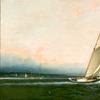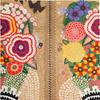Featured 19th Century Painter: Chauncey Foster Ryder (1868 - 1949)
- March 15, 2021 07:18
Chauncey Foster Ryder was born in Danbury, Connecticut, but spent his childhood in New Haven, Connecticut. Circa 1890, he moved to Chicago to study at the Art Institute and the Francis Smith Art Academy, where his skill resulted in his becoming an instructor. In 1901 Ryder packed up and moved to Paris, Francis to study at the Academie Julien under Jean Paul Laurens. He also studied privately with Raphael Collin and Max Bohm. He exhibited regularly at the annual Paris Salon from 1903 and 1909, even after having moved to New York City in 1907. He set up a studio there in 1909 and began exhibiting in the United States. About that time, Ryder had started making excursions into Connecticut and New Hampshire and in 1910 he and his wife bought a house in Wilton, New Hampshire in the scenic Monadnock Mountain region. Wilton was to serve as his home base for the remainder of his life, although winters were still spent in New York City. Around this same time, artist Chauncey Foster Ryder was painting at art colony at Old Lyme, Connecticut and was asked to paint a panel in the dining room of the famous artist’s boardinghouse run by Florence Griswold. Ryder also traveled to the coasts of Massachusetts and Maine searching for views to paint. Starting in 1920 he traveled south to the mountainous scenery of eastern Tennessee and western North Carolina. It was also in 1920 that the Ryders began summering on rocky Monhegan Island, Maine. Chauncey Foster Ryder’s paintings are best described as a tonalist post-impressionist—somewhat abstract, yet retaining distinguishable representational elements. He is probably best known for his distinctive gray-green tones known as “Ryder green”. Ryder was a member of, or exhibited at, numerous of organizations including Salmagundi Club (New York City, 1926, prize); National Arts Club (New York City, 1930, medal, prize); Lotos Club (New York City); Brooklyn Society of Artists; Allied Artists of America; American Federation of Arts; American Water Color Society (New York City); National Academy of Design (New York City, 1933, Obrig Prize); Chicago Society of Etchers (1392, prize); the New York Water Color Club; The Art Institute of Chicago (1903–06, 1907); Pennsylvania Academy of the Fine Arts (Philadelphia, prizes 1906, 1910–38); Macbeth Gallery (New York City, 1907–30, 8 prizes); Corcoran Gallery of Art biennial, Washington, D.C., (1908–35, 9 prizes); Seattle Art Museum, Washington (ca. 1910); Worcester Art Museum, Massachusetts (1910); Lyme Art Association, Connecticut (1910–11); Panama-Pacific International Exposition, San Francisco, California (1915, silver medal); Baltimore Watercolor Club, Maryland (; 1920, prize); the Exposition Internationale (Paris, France 1937, gold medal); Society for Sanity in Art, Chicago, Illinois (1939, medal, prize); New York Watercolor Club, New York (prizes); Art Institute of Chicago; Corcoran Gallery and/or Art School, Washington DC; The Pennsylvania Academy of the Fine Arts.













_-Closing-the-Distance_100x100_c.jpg)







